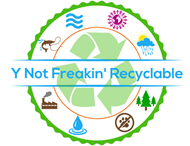[ad_1]
After a visit to the Bullitt Center in Seattle, Diana Blank was inspired to fund a similar project in Georgia. Taking action, she founded the Kendeda Fund and funded it with $30 million to donate toward the cause. Georgia Tech is the recipient of Blank’s vision with a project by Lord Aeck Sargent and The Miller Hull Partnership that resulted in a Living Building. The net-positive Kendeda Building opened for classes in January 2020 and provides a place for learning and a template for innovative, sustainable design.

The construction and design were influenced by the Living Building Challenge, “a green building certification program and sustainable design framework that visualizes the ideal for the built environment.” Receiving this certification means meeting a host of requirements on everything from material selection to accessibility, and the Kendeda building checks all of the boxes.
Related: Net-zero Del Mar Civic Center celebrates community and the great outdoors

One example is The Red List, which is a compilation of chemicals common in mainstream construction. In order to avoid these chemicals, every building material was scrutinized to ensure it didn’t contain Red List items. John DuConge, the senior project manager, admitted, “Getting through the Red List compliance, that was truly a challenge, and that probably took a lot more time than anyone expected. But we’ve moved the needle in the market, I think, and that’s one of the things that will make it easier for the next Living Building Challenge project.” This added effort creates an atmosphere without off-gassing or other toxins, resulting in clean indoor air for the hundreds of students and staff using the building daily.

Every system in the building stands as an example of the focus on function, internal health, aesthetic beauty and energy savings. This is quickly apparent in the fact that the project is net-positive for energy and water, meaning that it gives back more than it takes.

The Kendeda Building incorporated the use of solar panels as a basic step in providing energy to the 47,000-square-foot building. They do the job, plus some, with extra energy to return to the grid. Additionally, these solar panels function as water collection devices. The primary heating and cooling systems then push that water through the floors to maintain a comfortable surface temperature. For additional temperature control, 62 ceiling fans throughout the building help balance the humid Georgia environment.

Now complete, the structure consists of two 64-person classrooms, four class labs, a conference room, makerspace, auditorium, rooftop apiary and pollinator garden, an office space for co-located programs and a coffee cart. The Kendeda Building will be audited for certification for the first Living Building Challenge facility of its size and function in the Southeast, following one complete year of functional occupancy.
Photography by Johnathan Hillyer, Justin Chan Photography, Miller Hull Partnership and Vertical River via Georgia Tech

 Pollution Climate Change Holocene Deforestation Population Acidification Y Not Freakin' Recyclable
Pollution Climate Change Holocene Deforestation Population Acidification Y Not Freakin' Recyclable



